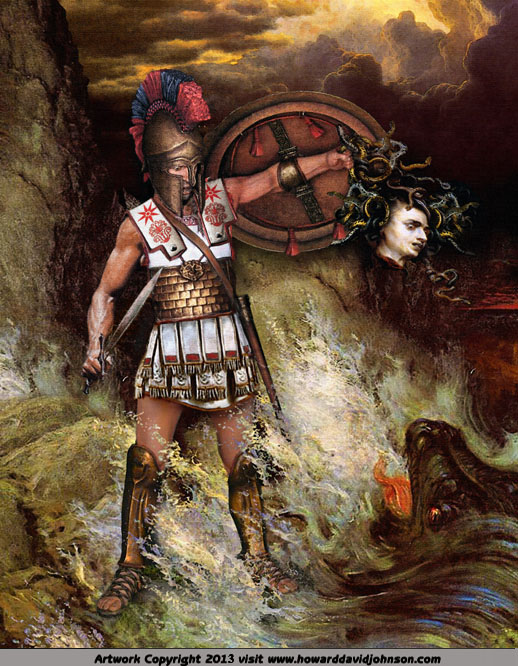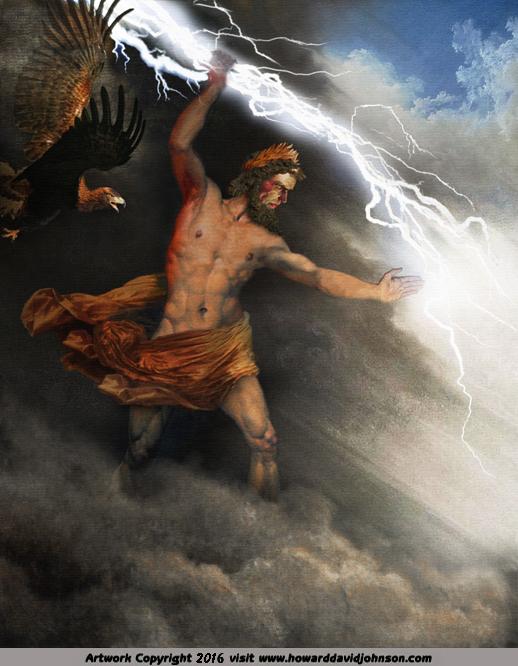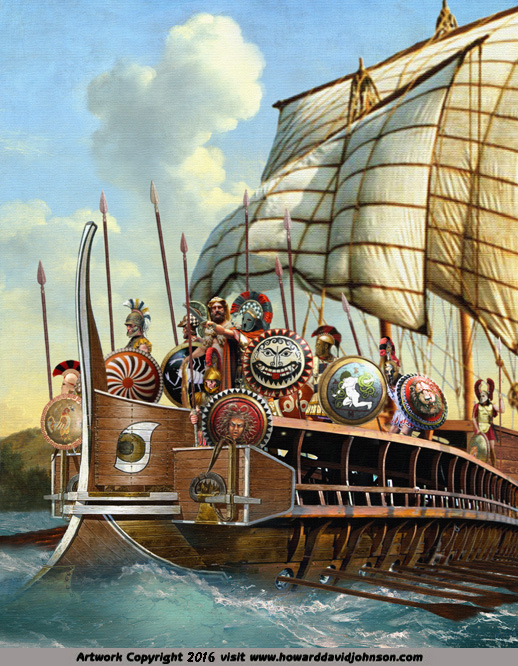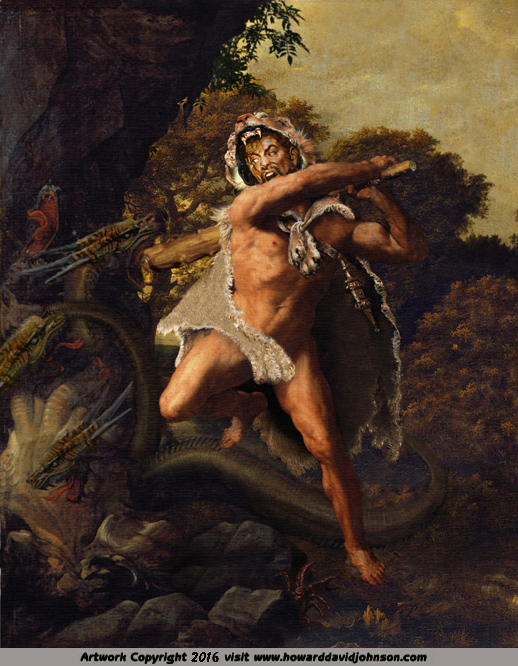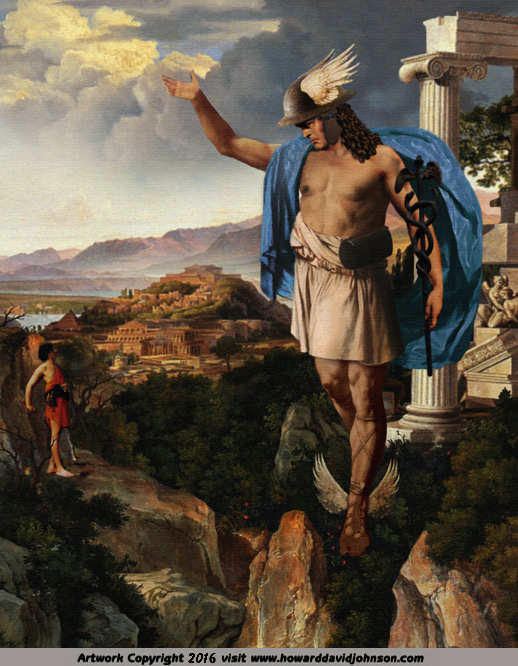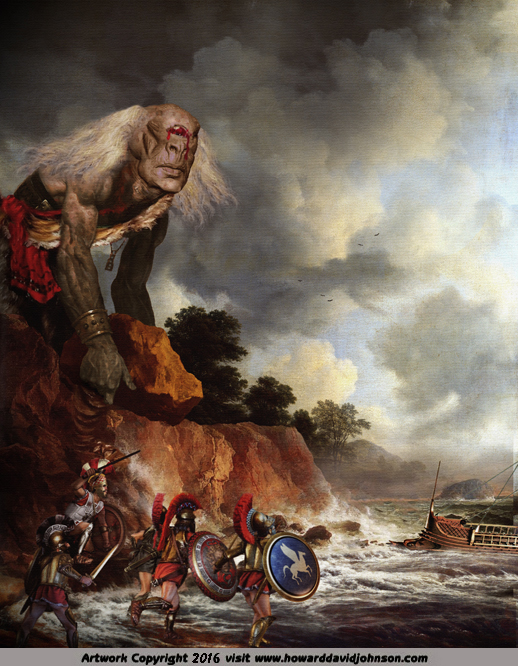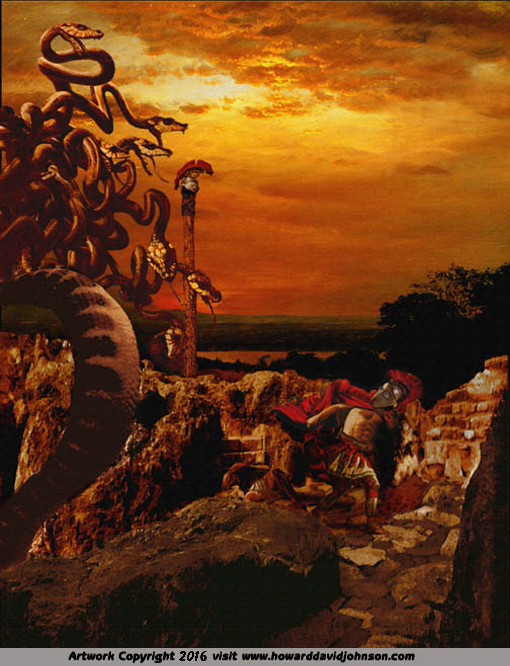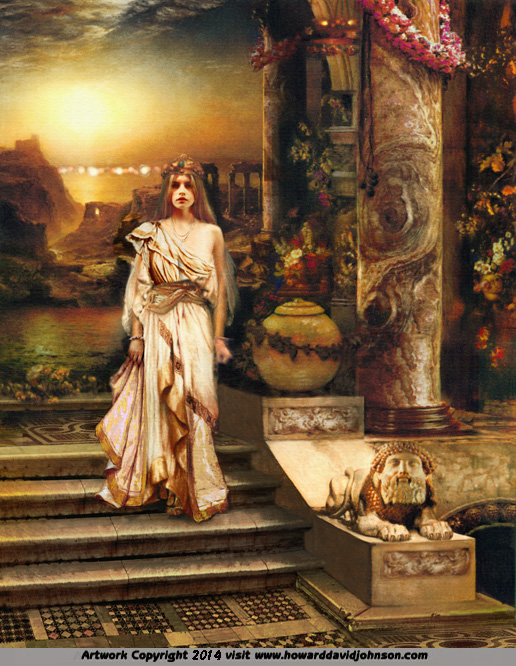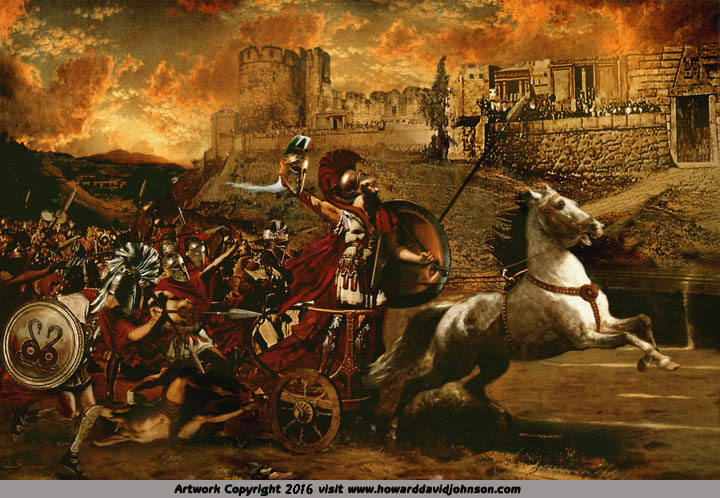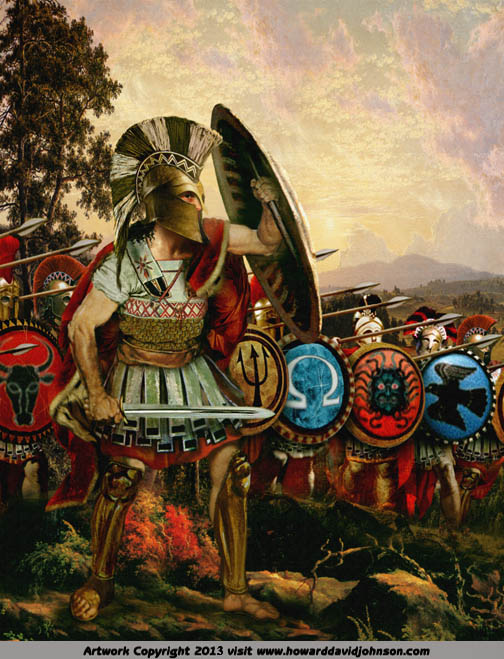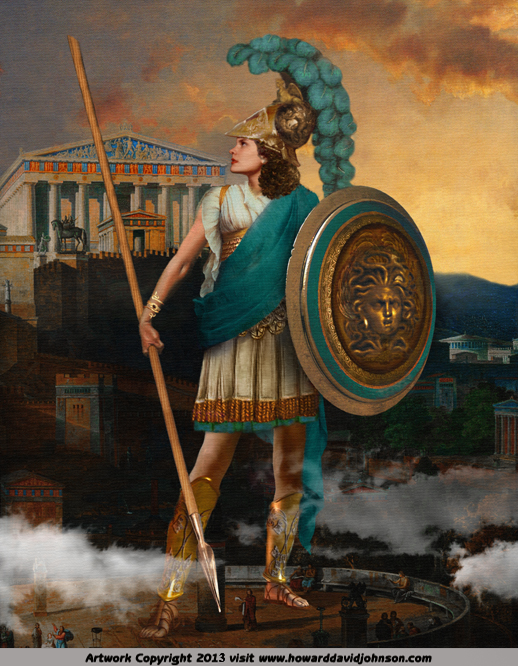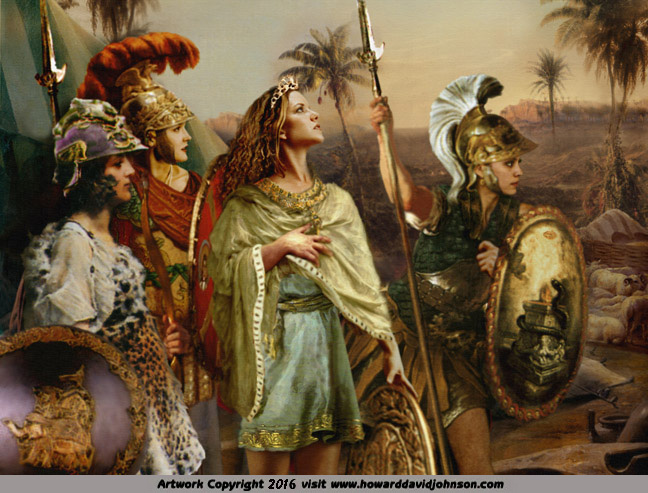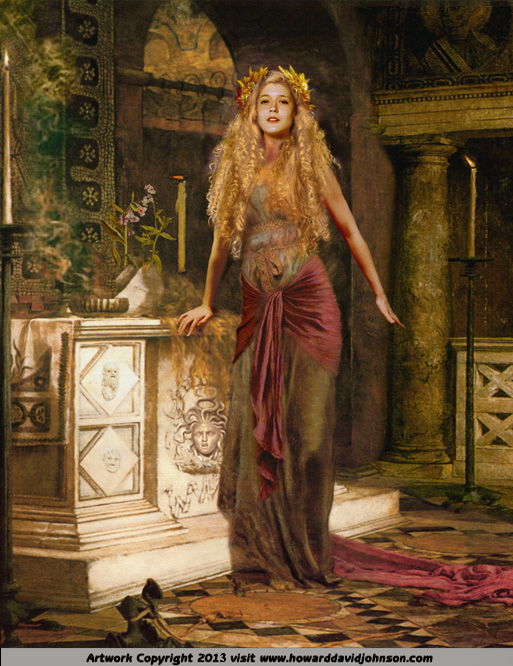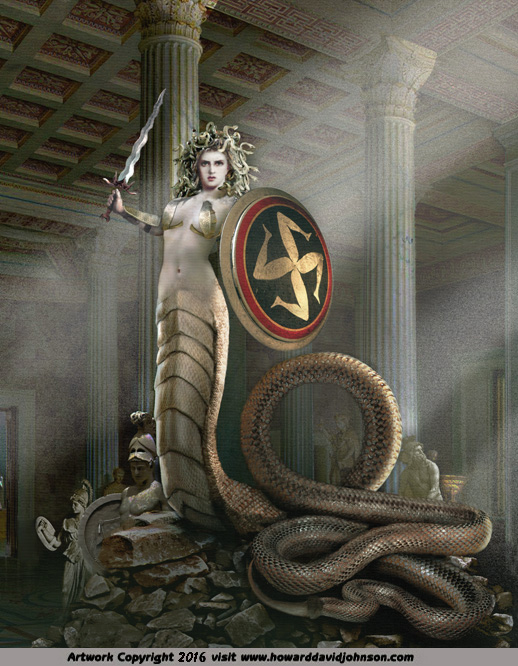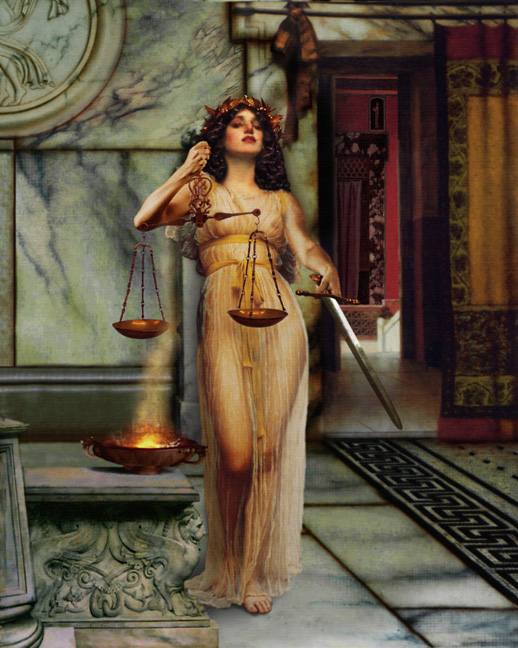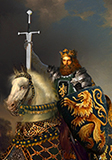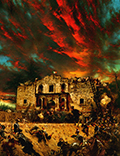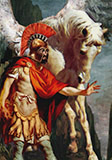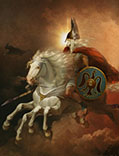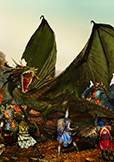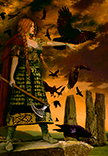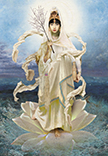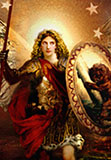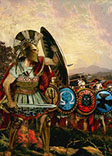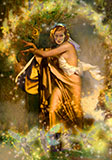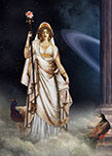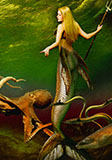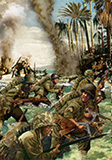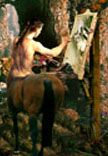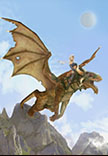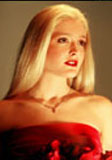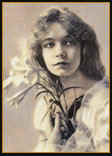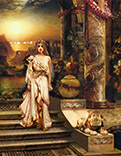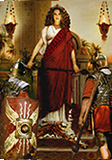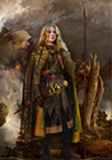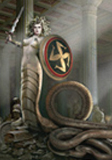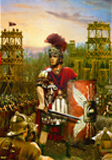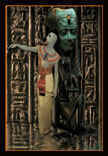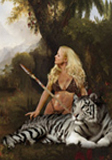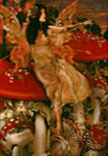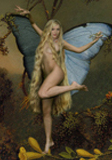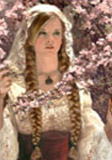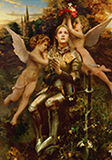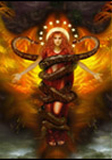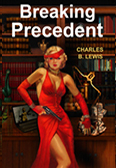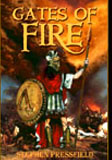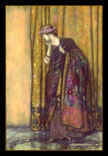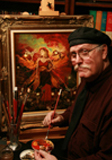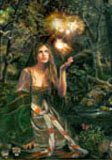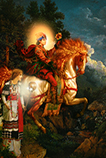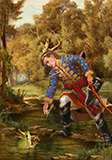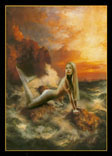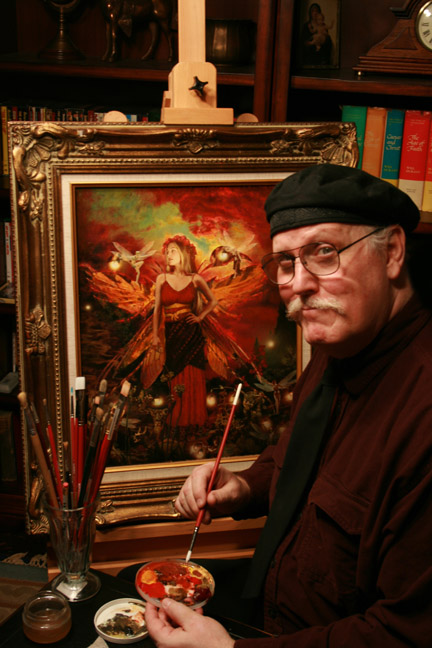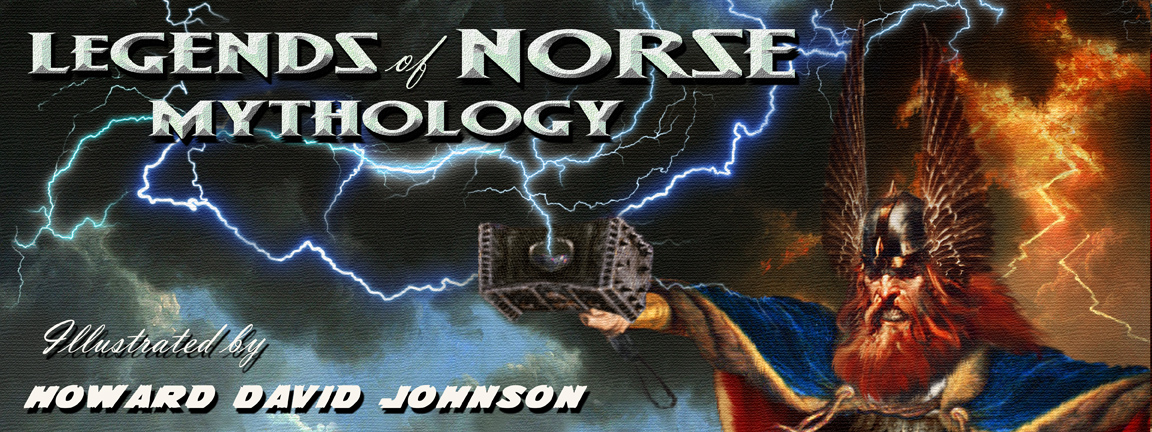|
Bonus Section:
Personal Opinion Essays on Realistic Art
yesterday and today by the artist.
HOW DO WE SORT OUT HISTORY AND MYTHOLOGY?
A brief essay by H. D. Johnson


"As a professional Illustrator I
am called upon to illustrate Legends of History and Mythology, Fact and
Fantasy, the Sacred and the Profane. In as much as I have endeavored to
sort them out accordingly, it has become one of the more fascinating
challenges I have ever faced." ~HDJ
|
|

|
As I am
ever mentioning, the advances of science are constantly giving us a
clearer view of the past even causing Mythology to become History as in
the case of the Trojan Wars, the legendary Helen of Troy, and the
Trojan Horse. The archaeological excavations of Troy may prove the
existence of the city of Troy and the Trojan War. They in no way make
The Iliad a history book however, because of the un-provable spiritual
and religious occurrences in the narrative.
This
sorting out of myth and legend from history is no less difficult today
because of their intertwining influences on one another.
Consider
as a more recent example of this problem, 20th century American
President Theodore Roosevelt. He lives in history because of his heroic
charge up San Juan hill with his legendary roughriders. When this story
was printed in William Randolph Hearst's newspapers it catapulted him
to fame and ushered him into the White House as a glorious American War
Hero. Everyone has seen the paintings and statues of Teddy Roosevelt
and his roughriders dressed in khaki, mounted on horseback and charging
fearlessly forward waving their swords.
|
In reality, it was a group of Heroic African American Buffalo Soldiers
who took San Juan Hill in spite of their heavy casualties. They did not
wear khaki. They were not mounted on horseback, but were foot soldiers
in the same dark blue uniforms of the U.S. cavalry as worn during the
Indian Wars. Roosevelt's group actually took a nearby Hill against
light resistance but Hearst said that would not sell newspapers so he
created an American Myth. So as we see, here is something taught to
children in schools as history is just not true at all, but yet, this
myth shaped the true history of the world in the 20th century and
beyond.
If Teddy Roosevelt had not been elected president,
neither would his nephew, Franklin Delano Roosevelt, who provided very
real and crucial leadership during the Great Depression and the Second
World War. Neither would Theodore Roosevelt have built the Panama Canal
or established the conservation of our natural resources. So here we
see Modern Myth not only influencing, but creating History. In reality,
I perceive Theodore Roosevelt was a much greater president than history
gives him credit for. Although it is true his kindness created the
"Teddy Bear", He really was also fit and trim, vigorous and active, and
a very tough president in his foreign policies. He was instrumental in
America's emergence as a world power. It is also true that he came from
the upper upper class - old money in New York with a background of
great wealth and limitless luxury and chose to be an outdoorsman, a
cowboy, and soldier. When he was given office, he embraced the concept
of being a good Shepherd , of seeking justice for all
Americans - for this he was called a "traitor to his class".
Actually, he is the savior of his class. In my estimation,
it is President Theodore Roosevelt who is most responsible for the end
of the then imminent threat of communist revolution or takeover in
America. Throughout the early 20th century Socialist Revolutions were
sweeping across the globe. Conditions for the workers in America were
appalling. Child Labor, dangerous working conditions, ungodly long
hours, degradation, and shockingly low pay. When Karl Marx wrote his
"Communist Manifesto" he never dreamed of an affluent MIDDLE class. A
middle class that is comfortable and savoring, life, liberty, and the
pursuit of happiness is not going to rise up in murderous anger and
"Storm the Bastile". What Global Communism could not contend with was
America's happy and prosperous middle class. Theodore Roosevelt
practically invented America's affluent middle class and eliminated the
threat of Communist revolution in America. Although he was well
loved, he was also hated and caught tremendous heat from the wealthy
elite for sharing a small portion of their wealth with the common man.
He saved them from a Second American Revolution by customizing
capitalism to a kinder, gentler form than the horrors of the late 19th
century. Like General Winfield Scott, who won The American Civil War
before it started, he defeated his foes with an idea. If the Robber
Barons had had their way, their greed could well have caused America to
fall to communism. Today, we have a new generation of robber barons but
no Teddy to stand up for the little guys. I feel the true history about
American President Theodore Roosevelt is more amazing than the myth,
but they are interwoven and inseparable, without the one, we would not
have the other. He was both a glorious and a tragic figure. As a leader
and as a man I believe he is badly underestimated. It was only when his
beloved son, nicknamed "Quinnykins" died fighting in World War One that
he finally saw through all the myths and glamour to see the awful truth
about war face on. He never got over his guilt for glorifying war to
his son. We could all learn a lot from his experiences.
War costs
money...trillions of dollars. War takes human lives...millions of them!
War makes children old, breaks parent's hearts, kills morale. War
destroys cities, art treasures, civilization! The first world war alone
cost thirty million lives and 4 trillion dollars when adjusted to the
buying power of modern U.S. dollars. With the money at the time we
could have built a three bedroom two bath house furnished with fine
hardwood furniture on five acres of quality land for every family in
The United States, Canada, Australia, England, Scotland, Wales,
Ireland, France, Belgium, Germany and Russia. There would have been
enough left to build and stock a first class library and a proper
university in every town of 20,000 people or more. Out of the balance
we could pay the salaries for life of 125,000 teachers and 125,000
nurses. The remaining balance could have bought 1919 Belgium and France
and everything in them.
I see History as an endless waltz. Three beats over and over. War,
Peace, and Revolution. Three beats over and over in an endless cycle of
death, destruction, and regeneration. An Endless Waltz... and those who
do not learn the lessons of history are doomed to dance this deadly
waltz and pay this Frightful price for War. As modern technology such
as jet aircraft and thermonuclear missiles make the world smaller &
more dangerous everyday, tolerating each other's racial, social, &
religious differences & living together in peace has now become key
to the continued survival of mankind through the 21st century. We all
know the quote from Satayana: "Those who do not study history are
doomed to repeat it" but after the events of the early 21st century I
am reminded of a saying from Murphy's Law: " Those who DO study
history are doomed to sit by helplessly and watch while idiots repeat
it". Heaven help us.
~H D Johnson MMXII
*****
ABOUT THE ARTIST
"Those
who are enamoured of practice without science are like a pilot who goes
into a ship without rudder or compass and never has any certainty where
he is going. Practice should always be based upon a sound knowledge of
theory, of which perspective is the guide and gateway, and without it
nothing can be done well in any kind of painting."
| Howard David Johnson is a contemporary
visual artist and photographer with a background in |
| the natural sciences and history. He
works in a wide variety of media ranging from traditional |
| oils, pastels and others to cutting
edge digital media. He loves mixing media. This site features |
| examples of his Realistic Art,
including illustration, photography, experimentalism, and fine art. |
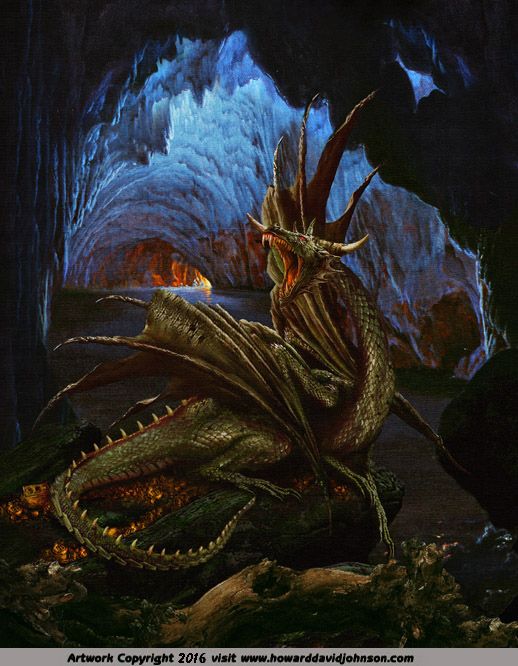
"The Dragon Níðhöggr" MMXI mixed Media
|
The
various galleries linked to by the icons above show many examples of
His Realistic Art, and are grouped by theme rather than media. There
are also sample illustrations from his upcoming books on Celtic
Myth and Legend and World Myth & Legend. Since boyhood he has
passionately copied the old masters. To create his work, he usually
starts with a thematic concept followed by a rough realistic
pencil sketch, then followed by his photography, often traveling to
find suitable scenes and locations and then working in his Photography
studio with live models from his sketches. He then assembles a variety
of elements which are realistic and original. As a boy he
dedicated his life to art in 1960. From 1965- 1999 he used xeroxes and
tracings to make his preliminary photo montages. This is patterned
after the manner used by Maxfield Parrish and other 19th century
notables. Beginning with a tracing, he then draws or paints from these
complex original Computer Photo Montages. Many of these are on display
on this web and slated for future completion in a variety of realistic
traditional art media. As this happens, the finished work is
substituted in the exhibit. Recently he shot hundreds of aerial photos
of clouds at marvelous angles and perspectives and also looking down on
the mighty mountains, rivers, and deserts of the American west while
flying from Texas to Oregon and back for dynamic source material for
realistic flying scenes in upcoming paintings , drawings, and
pictures. |
| His
favorite medium for realistic art is colored pencil because of the high
speed and low expense, and people began expressing difficulty in
telling his colored pencil drawing from photographs in the early
1980's. In the last 35 plus years he has also mastered Oils,
Pastels, Acrylics, Watercolors, Inks, Scratchboard, Gouache,
Photography, and the highly controversial digital media ( Art
Numérica ) . As a commercial illustrator Johnson has not only used
the computer to create art but has been involved in the development of
computer imaging software. Working in a realistic style inspired by
classic illustrators HDJ is deeply rooted and grounded in the
Greco-Roman artistic tradition, Feeling that with realistic art, the
human form is the ultimate arena for artistic expression. His lifelong
dream came true when his Traditional Realistic Art was exhibited in the
British Museum in London England in 1996. His mixed media has also been
displayed in numerous other ones since such as the Metropolitan
Museum of Art. Having achieved international acclaim as a traditional
visual artist he discovered digital media ( Art Numérica ) in
1999. Because of his passion for realistic art and photography he
elected to embrace it and joyfully be a part of this historic era in
the visual arts as a 21st century realistic visual artist. |
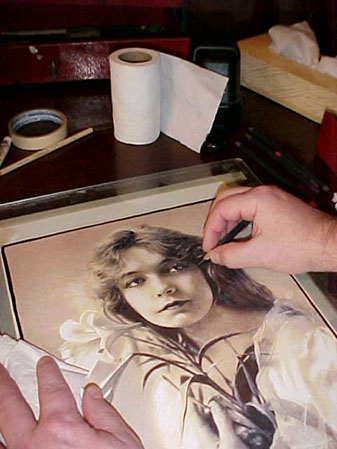 |
|
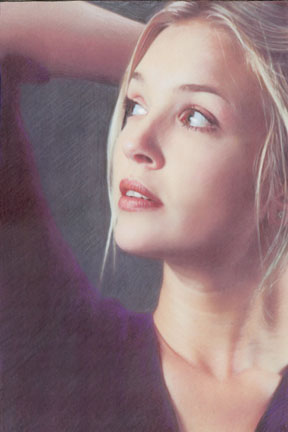
( Unblended Spectracolor pencils
on # 400 Strathmore Bristol board )
|
Since 1972 when he began his career as a
scientific illustrator for the University of Texas he has earned his
living illustrating all kinds of books, magazines, CD covers, and all
sorts of games, greeting cards, calendars, portraits, murals and the
like with his contemporary realistic art... HDJ's Realistic Art
has appeared in every major bookstore chain and fantasy gaming shop in
The United States and has been used in educational texts and magazines
all over the world. This site features realistic paintings &
pictures for the twenty-first Century including some oil
paintings, as well as lots of other exciting media such as colored
pencil drawings, pastel paintings, acrylic paintings, gouache
paintings, watercolor paintings, and pencil drawings, and also
featuring studio, field, & aerial photography, digital
painting and photo-montage and all these media mixed in an assortment
of experimental combinations...Working in a wide variety of media to
create his realistic art he offers his customers a host of payment and
product options. He delivers the rights to these custom made copyright
free illustrations and old fashioned customer service when he does
work-for-hire. |
HDJ's Mythic Art creations take their inspiration from the realistic
paintings of the old masters just as West Side Story came from Romeo
and Juliet. Our shared cultural heritage, great works of art,
literature, music and drama, cinema, folk tales and fairy tales are all
drawn upon again and again by the creators of new works. These works in
the public domain are both a catalyst and a wellspring for creativity
and innovation. Where would Walt Disney be without the Brothers Grimm,
Hans Christian Anderson, or Victor Hugo? Where would Aaron Copeland
have been without American folk music? Thomas Nast's Santa Claus
without traditional images of Father Christmas? Pablo Picasso without
African art? Public domain appropriators, one and all. HDJ accepts select commissions to paint custom oil
paintings with down payments starting at only one thousand dollars. He
grants permission for most educational purposes simply for the asking.
To use his existing realistic art works outside the classroom he offers
low cost license offers starting around $100.00.
Use
the e-mail links above or below to contact him...
*****
Music by Peter Ilyich
Tchaikovsky ( 1840- 1893) - "Swan Lake"
Thank You for
Visiting Howard David Johnson's World of Mythical Art...
*****
|
|
|
Bonus Section:
Personal Opinion Essays on Realistic Art yesterday and
today by the artist.
Art and
Technology: From the
Camera to the Computer
A brief
overview of the shifting cultural attitudes toward Realistic Art in the
last 150 years
~Essay #8
by Howard David Johnson
The first decade of the 21st Century has
seen a grass-roots counter-revolution in the art world which has
overthrown the stranglehold elitist proponents of Abstract
expressionism gained on academia, the media and the art world at large
in the early 20th Century.
Realistic Art was declared obsolete and irrelevant at the
beginning of the 20th Century due to the easy chronicling of
persons, places, and events by the Camera - in spite of this new
technology empowering the greatest era in Realistic Art history. The
“Modern Day Artist” refused to die and began to explore realms of the
heart and mind the camera could not record. The proponents of Abstract
Expressionism gained control of elite art collector’s markets followed
by academic institutions and the media leading to the abandonment of
centuries of classical teaching methods and traditions in our
universities. Even the best realistic art was later denounced and
ridiculed as the dismissive and often even hostile Art establishment
created elitist scorn for Realistic Art in general. This created a
disconnect with the general population who could not relate to the
tenets of Abstract Expressionism. The advent of the internet broke the
absolute domination of the opinions of the Abstract School on media and
academia and opened the floodgates of artistic expression and free
opinions. Free at last from institutionalized condemnation, more and
more artists began to choose realistic treatments and a tidal wave of
fabulous new realistic art has been created in every conceivable visual
art media for museums, galleries, books, movies, and video games.
As
the camera became commercially available in the early 19th
Century it became clear that the visual artist was no longer an
indispensable member of society. Just about anyone could point and
shoot this device at persons, places, and things and get very fast and
very realistic results. Resentment from thousands of years of artists’
social and political influence fueled the notion that visual artists
should be declared obsolete. The adoption of the camera as an artist’s
tool and the advent of an era of glorious and unprecedented realism in
painting did not stop the movement to crush the political and social
influence of the artist.
Great
realistic artists like Pablo Picasso and others like Vincent Van
Gogh courageously answered this challenge by exploring concepts that
could not be photographed with brilliant and visionary works. It was
from these honest and ingenious notions that the schools and
sub-schools of Abstract Art developed. The freshness and innovation of
this movement took the art world and academia by storm. The excitement
of defining the tenets and the delight of bewildering the masses gave
rise to an elite class of critics who could control the lucrative art
collector’s market with obfuscation and intellectual snobbery.
This
wealthy art collector’s market gave credence to Abstract
Expressionism’s “high art” status and the advice of well placed critics
became extremely valuable and they formed an alliance with like-minded
academics. As time passed, this trendy movement whose concepts were so
hard to argue with gained control of the establishment and elitism took
root. It was not long before traditional painting methods were not
taught in universities any more as realistic art was no longer
considered “Real Art” and tenets like; “Art must be ugly”, Art must be
new” Art must be obscure”, and “The best Art is offensive” took hold in
schools and printed media.
Not satisfied with
control over the most lucrative galleries, collector’s markets and
academia, these elitists moved from dismissive to openly hostile
attitudes toward those who still loved and created realistic art. The
merciless and unprovoked rebukes of great realistic artists like Norman
Rockwell, N.C. Wyeth and so many others are well documented in 20th
century histories. That’s not “Real Art” and why do you waste your
talent on “Mere Illustration” were some of the nicer comments.
Illustrators in the 20th century wore these rebukes like
badges of honor, like black eyes gained from standing up to schoolyard
bullies, knowing in their hearts what they were doing was worthwhile
and the narrow minded views of their critics were not the only valid
opinions. By the end of the 20th century, the long
apprenticeship tradition was broken and classical realistic art methods
were lost forever. The Shock Art movement in the 1990’s carried the
tenets to new extremes as “ART” became a dirty word. U.S. Government
Endowments for the Arts were discontinued. Abstract Art had become the
norm with its obfuscated themes and was then itself considered
irrelevant and academically worthless. Art programs were then removed
from countless public school curriculums to make time for standardized
test preparation. There is no way that mandating more math, requiring
more reading, or scheduling more science will replace what we have lost
as a culture.
At
the turn of the 21st Century the Abstract Expressionists
had been in control for generations with a thought control blockade in
books, newspapers, radio, television and schools. Anyone who disagreed
with them was told they were too stupid to understand “Real Art” and
theirs was the only voice to be heard. What had begun so beautifully
and sincerely was hijacked and violated until it became a byword for
vulgarity. Then came the internet and the realistic artists, long
silenced began to express their views. It was like the boy who cried: “The
Emperor has no clothes!” This revelation spread like wildfire
through the cultural consciousness. Suddenly, it was no
longer a disgrace to hold something other than those narrow views.
Galleries on the internet showcased generations of repressed artists
realistic works in a tidal wave art history calls: “the Realistic
Revolt”. Of course, Abstract Art still flourishes today especially on
college campuses, but the narrow views of its most fanatical proponents
are no longer cruelly dominant.
The
Realistic Revolt has brought the return of respectability to
illustration and realistic landscape and portraiture. When I see the
works of today’s vast multitude of realistic artists coming from a
thousand different directions at once, tears come to my eyes, for I
have worn the title “illustrator” as a badge of honor for decades and
am deeply moved to have lived to see new developments in art and
technology drive the visual arts to levels of quality beyond my wildest
dreams. I predict 3D and digital media will grow more and more
realistic until photos seem noticeably inferior. The internet has not
only opened the floodgates for artistic expression, but employment and
untold artists are earning a living shattering the “Starving Artist”
stereotype so engrained in our cultural consciousness. The beginning of
the 20th century saw technology threatening the survival of
the professional artist and the end of it saw the unbridled tenets of
Abstract Expressionism like “Art must be offensive” threatening the
very existence of art as a part of our culture, the modern day artist
has once again refused to die and has embraced technology to create a
rebirth of realism that Art critics, collectors, academics and everyday
folk can all embrace and celebrate in ways I once feared had been lost
to us forever.
~
Howard David Johnson (2012)
|
In addition to his mastery of traditional media, Howard David Johnson
now combines drawing, painting, photography, and digital media with
more than thirty years of experience in these fields to create his
Realistic Art Numérica in 21st century paintings and pictures. Did you
know the Greek word "Photography" means "Painting with Light"? Today
with the advent of computers it truly lives up to it's name. Due to
developments in Art and Technology, a broader definition of painting is
needed than that which is found in common usage. Announcing Art Numérica
-an exciting merger of traditional visual
art and cutting edge technology... a new art form for the twenty- first
century... Art Numérica is not limited to realistic art but also offers
limitless horizons for everything from cartoons to abstractions. It is
the most dramatic development in the visual arts since the Renaissance.
In the words of Al Jolson in the world's first talking picture" You
ain't seen nothin' yet!"
|
Essay One: "THE MORE
THINGS CHANGE, THE MORE THEY STAY THE SAME..."
(A Brief essay dealing with attitudes toward
Traditional Realistic Paintings, Pastels, Colored Pencils and Art
Numérica)
|
"Painting,
in art, the action of laying colour on a surface, or the representation
of objects by this means. Considered one of the fine arts"
~Encyclopaedia
Britannica.
"Painting.
noun. 1.) The act or employment of laying on colors or paints. 2.) The
art of forming figures or objects in colors on canvas or any other
surface, or the art of representing to the eye by means of figures and
colors any object; the work of an illustrator or painter. 3.) A
picture; a likeness or resemblance in shape or colors. 4.) Colors laid
on. 5.) Delineation that raises a vivid image in the mind; as in word
painting.
~
Webster's Unabridged Dictionary of the English Language
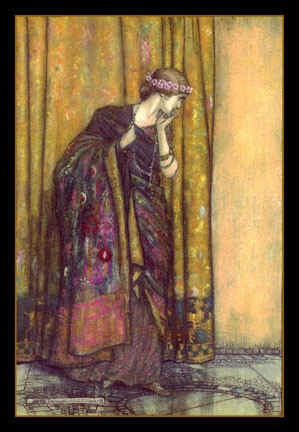
Pastel,
Acrylics, and Colored Pencils combined
|
Snobbism in the arts is
nothing new. Some people will tell you that oils are the only valid
medium for realistic paintings. That Colored Pencil, Digital, and other
Realistic Painting and Drawing Media are not valid for "real"
art. Young artists, Don't let them bother you. Their forerunners used
to condemn Pastels before they gained acceptance and called them
"crayons" when Johann Alexander Thiele (1685-1752) invented them.
Mercilessly disrespectful art critics of the time could not stop
the Experimentalists no matter how viciously they attacked and derided
them. "Crayon-painting" as it was called in England was practiced early
on by persecuted pioneers in Switzerland and many other nations. What a
debt we owe to these master artists who refused to knuckle under to the
pressure of those short-sighted critics during those historic and
experimental times. It took until 1870 with the founding of the
"Societe` Des Pastellistes" in France that respect came at last
to these heroic & immortal visual artists.
|
|
In England
the liberation of the Pastellists from slight regard and undeserved
disrespect came with the first exhibition of "The Pastel Society" at
the Grosvenor Gallery in 1880. Pastel Painters like Mary Cassat
and others from America and other nations forever silenced the
snobs with their masterworks and gained recognition at long last for
Thiele's invention as a valid art medium. I am persuaded that history
will repeat itself. Like Pastels, I believe these wonderful new
colored pencils and even Digital Realistic Art Media will one day
receive the recognition they deserve as powerful mediums of artistic
expression just as pastel paintings did. What is your definition of
art? Have you thought about it?
Mine is: "anything that makes you feel or think."
Consider dancing... it
can be a little skip in the step or rise to the level of the
incomparable Russian Ballet. Did you know that just the materials alone
for a single oil painting cost up to a thousand dollars these days?
Even paying the artist less than minimum wage no one but the super rich
can afford them anymore. Something's got to give. Realistic paintings
in oil have been highly prized for centuries and the appeal and
following of realistic art is undiminished to this day. Oil paintings
featuring Abstract Art and Realistic Art are generally the most
treasured form of all the visual art media and with good reason. But
snobbish art critics favoring abstract art have declared
that realistic paintings, or illustrations are not art for a century.
With so many representationalist paintings by so many immortal
master artists hanging in the Louvre, the Hermitage, and the British
Museum and others I think the disrespect for realistic illustrators
that dominated the 20th century is academically ridiculous as well as
vain and intolerant, insisting theirs is the only valid
opinion. What is your definition of Art? I believe almost any
form of human expression can be raised to the level of "high art"
especially visual art and Realistic illustration...
|
|
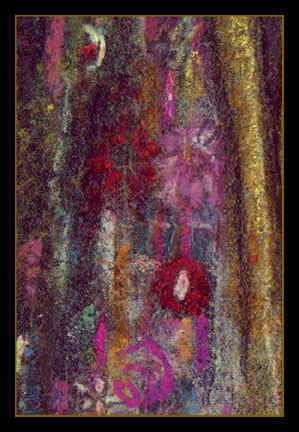
The detail reveals Realistic art and abstract art
combined
|
By my own
definition of art, which is: "anything that makes you feel or think"
most abstract paintings are not "real art" to me personally,
because abstract paintings usually neither make me feel or think,
usually focusing obsessively on technique and avoiding any coherent
content. I usually draw a complete blank mentally and emotionally when
I look at them. In 1979 the Houston Metropolitan Museum of Art
displayed a triptych of 3 giant paintings they paid fifty
thousand dollars for- three blank white canvasses entitled
"untitled". Then there was "The incredible new artistic Genius" with an
I.Q. of 62 ...Congo the chimpanzee with his gala New York art
exhibition...an elaborate prank played on the Snobbish American Art
critics about a generation ago by research scientists in the field of
primatology. Imagine how upset they were when he created one of his
"ingenious masterpieces" right before their eyes.
( My Source for this is the Time Life Science
Library volume entitled "The Primates". )
|
|
Art education has been
almost completely removed from American Schools as a result of
generations of this kind of fabulous nonsense contributing to
America's cultural illiteracy crisis. Now, the works of Leonardo Da
Vinci, Michaelangelo, and other notables are being removed from school
libraries. After generations of this, most American college
graduates today cannot name even one living visual artist, abstract or
realistic.
There is no way that mandating more math,
requiring more reading, or scheduling more science will replace what we
have lost as a culture.
What is your definition of Art?
~HDJ
*****
|
| Note: Abstract Paintings by Congo the
Chimpanzee outsold Warhol and Renoir by over 25,000 dollars in June
2005 at a London art auction. Born in 1954, Congo created more than 400
drawings and paintings between the ages of two and four. He died in
1964 of tuberculosis. There is no precedent for this kind of sale. |
Essay
Two : The Rebirth of Realism
More
thoughts on realistic art yesterday and today by the artist
Art
History has entered a new era with the birth of Art Numérica, or
digital art media in the 21st century. Artists never stop exploring
with mediums. Artists have been developing techniques, experimenting
with different tools since at least twenty- five thousand years ago,
when the first artist picked up a charred stick and scratched a picture
out on the wall of his cave. You'd think everything would have been
tried by now, but it hasn't. Exploring new mediums this very day is
just as exciting, just as full of freshness and newness as it ever was.
|

Gates of Fire by Stephen Pressfield (Danish Cover)
|
The creation of Realistic art has been the goal
of most artists since the dawn of civilization. Realistic art was
the pride of ancient Greece. The world's greatest museums are full of
realistic art. Realistic art WAS art until the advent of the abstract
expressionist movement in the twentieth century. The coming of the
camera in the nineteenth century changed realistic art forever.
Suddenly, realistic art was not the only way to create realism in
portraits and historical records. The work of the realistic artist was
suddenly made into an expensive luxury. The political power of the
realistic artist was broken and they were no longer an indispensable
member of society. Hostility to the creators of realistic art goes
back to ancient times and the jealousy of advisers to the Pharaohs and
others who were not able to spend as much time with their rulers as
their portraitists. Although with the aid of photographs,
realistic art achieved levels of excellence undreamed of, the realistic
art movement of the late nineteenth century was short. |
| None of
these people earning their living creating realistic art could compete
with the speed and low cost of photographic portraiture.
Determined to survive, great realistic artists like Pablo Picasso
ingeniously turned inward and began to explore things that could not be
photographed in a new school of art, abstract expressionism. The day of
the fine art superstars had arrived. It was now largely just a hobby to
abstract and realistic artists alike. Illustration, because of advances
in printing technology enabled an elite few to earn a living with their
realistic art. These illustrators working in realistic art media
were condemned and ridiculed in much the same way Europe's great
symphonic composers were condemned for working in motion pictures after
fleeing the Nazis during World War Two. The rift between realistic and
abstract art grew wider and wider. The universities and key media
usually sided with the abstract camp and derided anyone working in any
realistic art media declaring boldly that realistic art was not "real"
art. Immortal giants of realistic art such as Maxfield Parrish were
mistreated their entire lives. They were accused of selling out for
creating beautiful pieces of realistic fine art to earn a living. The
attitude that the true artist must suffer and starve and die in poverty
became a rule. There were the Abstract art superstars, the professional
realistic illustrators, and the hobbyists who, although cut off from
gainful employment and social influence still recognized their artistic
gifts as a calling rather than a profession. |
Early abstract art masters proved
themselves as realistic artists before delving into realms of the
intangible. They had to do this at that time to prove themselves
because of the challenges they faced from the establishment for going
against the status quo. In the latter part of the 20th century,
realistic artists like HDJ were challenged to do abstract art to prove
themselves as shown in the example above (Deirdre of the sorrows).
Later realistic art training was abandoned in most schools and things
like splattering paint in fits of rage were deemed more than
enough. By the end of the 20th century something as destructive and
ridiculous as nailing a pack of cigarettes to a shoe was considered
fine art but not realistic paintings. Fashions in art have often been
as silly as fashions in ladies hats. As the century drew to a
close, many people had had enough. The realistic revolt was at hand.
The rebirth of realism was fueled by the advent of the digital era.
Now, for the first time in almost two centuries, an artist or
illustrator could earn a decent living again with his realistic art.
This is historic. Realistic art is not going to go away, especially now
that photography has truly merged with traditional realistic visual
art. Photography comes from the Greek words meaning "painting with
light". Now with the advent of digital media the capability of
realistic art has become almost limitless, truly, "painting with
light". The merger of all the world's art forms to realize the
potential of motion pictures has come now to still realistic art media.
This website for example, combines music, prose, poetry, photography
and traditional realistic art media to create an experience beyond
merely looking at realistic paintings.
The twenty- first century is already seeing a
new renaissance in the arts because of the world wide web. There has
never been anything like it. Abstract art, computer art, photographic
art, and realistic art are continuing to be separate schools of art but
are also blending to create exciting new horizons. Although Digital art
does offer completely new horizons to the artist in the 21st century it
does not mean the end of our time honored art traditions. Instead, it
offers additional ways to keep these traditions and schools of
thought fresh and alive. ~ HDJ
*****
|
